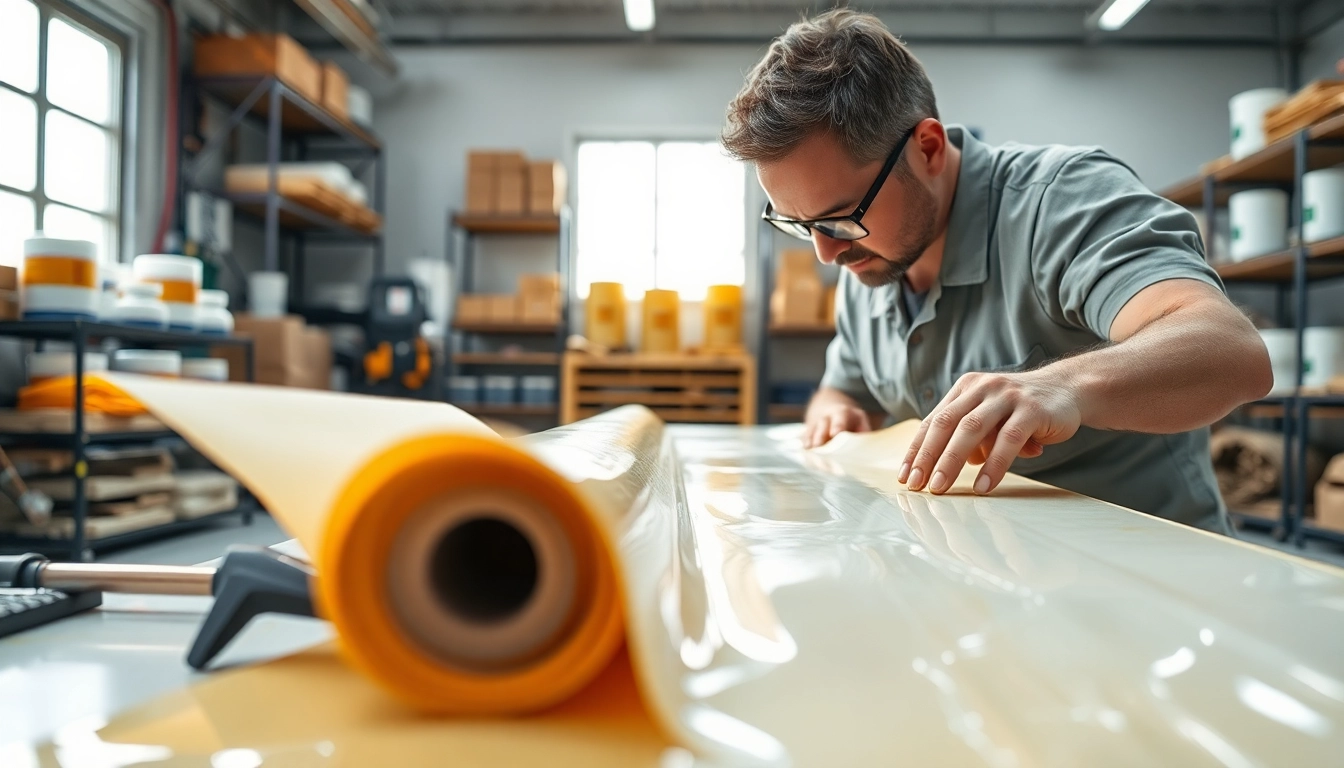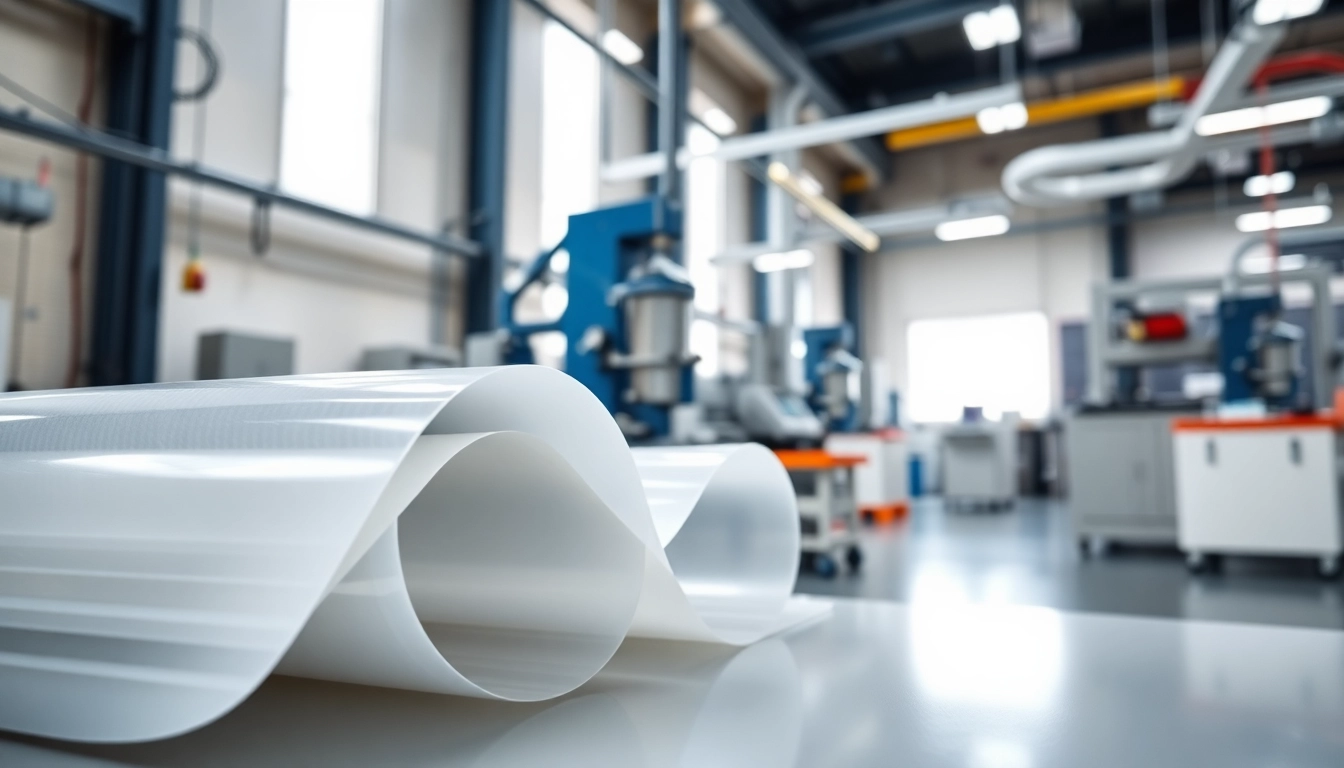Understanding Precision Die Cutting
What is Precision Die Cutting?
Precision die cutting is a manufacturing process that involves cutting materials into specific shapes and sizes using specialized tools known as dies. This method allows companies to produce intricate designs with high accuracy and uniformity, making it a go-to solution for a variety of industries. In essence, precision die cutting creates closely fitted parts from materials such as paper, cardboard, rubber, plastics, and metals. Its significance unfolds in being able to produce items efficiently and effectively at scale.
With advancements in technology, the evolution of precision die cutting has enabled manufacturers to achieve higher levels of customization, which is crucial for meeting the specific needs of businesses today.
Types of Precision Die Cutting Techniques
Several techniques are used in precision die cutting, each suited for different applications and materials. The main types include:
- Flatbed Die Cutting: This method employs a flatbed press that presses a blade into the material to cut it into the desired shape. It’s ideal for thicker materials and provides flexibility in design.
- Rotary Die Cutting: Utilizing a cylindrical die that cuts while the material moves through the die, this technique is best for high-volume production, such as labels and packaging.
- Laser Die Cutting: Laser cutting harnesses high-powered lasers to cut materials. This technique is highly precise and is excellent for creating intricate designs without the need for custom tooling.
- Water Jet Cutting: This technique uses high-pressure water jets to cut materials. It is particularly useful for soft and thin materials without generating heat, thus preventing distortion.
- Blow Molding Die Cutting: Specially designed for plastic materials, this method combines molding and die cutting to achieve specific shapes in a single process.
Materials Suitable for Precision Die Cutting
Precision die cutting is compatible with an extensive range of materials, expanding its application across sectors. Common materials include:
- Paper and Cardboard: Ideal for creating packaging components, graphic designs, and promotional materials.
- Foam: Used for insulation, padding, and protective items in various industries.
- Plastics: Including polyethylene and polypropylene for products in packaging, automotive and medical sectors.
- Metals: Thin metals such as aluminum and stainless steel can be die-cut for electronic components and machinery parts.
- Textiles: Fabrics can be cut for apparel design, upholstery, and other custom textile applications.
Advantages of Precision Die Cutting
Precision and Accuracy in Manufacturing
One of the most significant advantages of precision die cutting is its remarkable accuracy. The use of custom-designed dies ensures that each cut is precise, reducing waste material and improving production efficiency. This level of detail is essential for applications that require a high degree of accuracy, such as electronics and medical devices.
The ability to achieve tolerances as tight as +/- 0.005 inches allows manufacturers to create components that fit together seamlessly, which is critical in product functionality and consumer safety.
Cost-Effectiveness Over Time
Although the initial setup cost for die cutting can be substantial due to custom tooling and machinery, the long-term savings can be significant. By enabling high-volume production, precision die cutting reduces the cost per unit, which translates to lower overall manufacturing costs. Additionally, the reduction in waste material and the quick turnaround times can help further improve a company’s bottom line.
Furthermore, the repeatability of the die-cutting process means that companies can scale up production without incurring additional costs related to setup and labor, making this method economically viable for mass production.
Versatility Across Industries
Precision die cutting is not confined to any single industry; instead, it spans across numerous sectors. From creating surgical instruments in the medical field to manufacturing packaging solutions in retail, the versatility of precision die cutting makes it an invaluable resource in modern manufacturing. Specific sectors benefiting from this technique include:
- Automotive: Custom automotive parts and gaskets.
- Electronics: Circuit boards, insulation pads, and component parts.
- Medical: Surgical disposables and precision instruments.
- Packaging: Custom boxes, inserts, and promotional materials.
- Textiles: Fashion and upholstery applications.
Applications of Precision Die Cutting
Custom Parts for Industrial Use
Industrial companies rely on precision die cutting to produce custom parts tailored to their specific machinery and equipment needs. Industries such as automotive, aerospace, and machinery often require specialized components that can be manufactured quickly and accurately. Examples include:
- Gaskets: Precision-cut gaskets ensure a perfect fit for sealing engines and machinery.
- Insulation Pads: These are die-cut from various materials to provide thermal and acoustic insulation.
- Mounting Plates: Used in the assembly of machinery, these plates require exact measurements and materials.
Packaging Solutions with Die Cutting
In the packaging industry, precision die cutting has transformed how businesses approach product packaging. From custom boxes to inserts, die cutting allows for innovative designs that enhance product presentation and protection. Efficient die-cut packaging reduces material waste and can be tailored to fit a variety of sizes and forms, making it a preferred choice for many companies.
Implementing precision die cutting in packaging can enable companies to create:
- Custom Shapes: Boxes and containers that reflect a brand’s identity.
- Inserts: Protecting products by holding them securely within the packaging.
- Labels: Unique designs and sizes that stand out on the shelf.
Die Cutting in the Medical Sector
In the medical field, precision die cutting is imperative for creating high-quality, sterile medical devices and products. The industry requires parts that meet stringent regulatory standards and offer precision reliability. Applications include:
- Surgical Drapes: Custom die-cut drapes that aid in maintaining a sterile environment in operative settings.
- Bandages and Dressings: Precise die-cut shapes enable efficient use and application of these products, enhancing their functionality.
- Medical Device Components: Custom parts for devices must fit precisely and work seamlessly to ensure patient safety.
Choosing a Precision Die Cutting Provider
Key Factors to Consider
Selecting the right precision die cutting provider is critical to ensuring the quality and efficiency of your manufacturing processes. Key factors to consider include:
- Experience and Expertise: Look for a provider with a track record in your specific industry.
- Technological Capabilities: Ensure they use modern die cutting technologies that meet your specific needs.
- Quality Control Measures: Inquire about their quality assurance processes to minimize defects.
- Customer Reviews: Research testimonials and case studies from previous clients.
Questions to Ask Potential Vendors
When evaluating potential die cutting providers, it’s important to ask questions that uncover their capabilities and approach:
- What types of materials do you work with?
- Can you provide samples of previous projects similar to mine?
- What is your turnaround time for orders?
- How do you handle revisions or adjustments during the manufacturing process?
Evaluating Quality and Reliability
Quality and reliability are paramount in precision die cutting. To evaluate a provider’s performance, consider:
- Certifications: Check if they hold relevant industry certifications indicating quality standards.
- On-time Delivery Track Record: Assess their history of meeting deadlines.
- Customer Support: Determine their responsiveness and ability to address concerns promptly.
Future Trends in Precision Die Cutting
Innovative Technologies Shaping the Industry
The precision die cutting landscape is rapidly evolving, with several innovative technologies poised to shape the future:
- Automation: Increased automation in die cutting processes can lower labor costs and improve efficiency.
- 3D Printing Integration: Combining 3D printing with die cutting can offer new possibilities for complex designs.
- Artificial Intelligence: AI can enhance design processes by predicting user needs and optimizing manufacturing.
Sustainable Practices in Die Cutting
As sustainability becomes a priority, precision die cutting practices are adapting to become more eco-friendly. Initiatives include:
- Material Sourcing: Using recycled and sustainable materials for die cutting.
- Process Efficiency: Reducing waste and energy usage through optimized cutting methods.
- End-of-Life Recycling: Developing programs for recycling die-cut products.
The Future of Customization through Die Cutting
Customization will continue to be a critical driver behind precision die cutting as customers increasingly seek tailored solutions. The ability to rapidly iterate designs and produce unique parts on-demand will be essential for businesses looking to maintain a competitive edge.
Additionally, advancements in software and design tools allow for more intricate designs and improved client collaboration early in the development process. Overall, the future of precision die cutting looks promising as it aligns with evolving demands across various industries.


